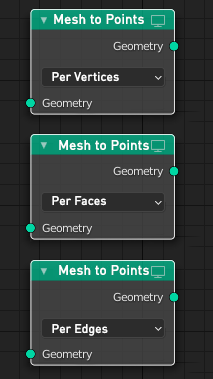Hello
Cool to hear that this proposal got accepted!
Please consider this “mesh to point” proposal ![]()

as explained in the post, not having the automatic conversion when working with per mesh-element instancing can cause problem down the line, as there will be attribute missing errors
Hey @Eary
i think what we all want is some optimization option at an instance level
for example an new “Instance Viewport Optimization” panel either per scene or per object
The problem is linked with instancing, not with geonode, so that’s a task for devs in charge of the viewport imho